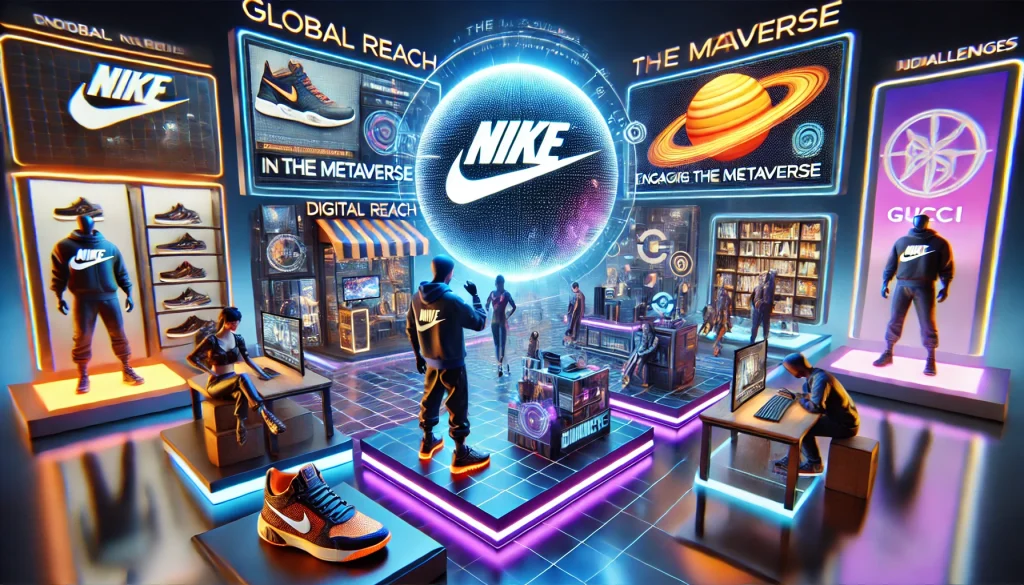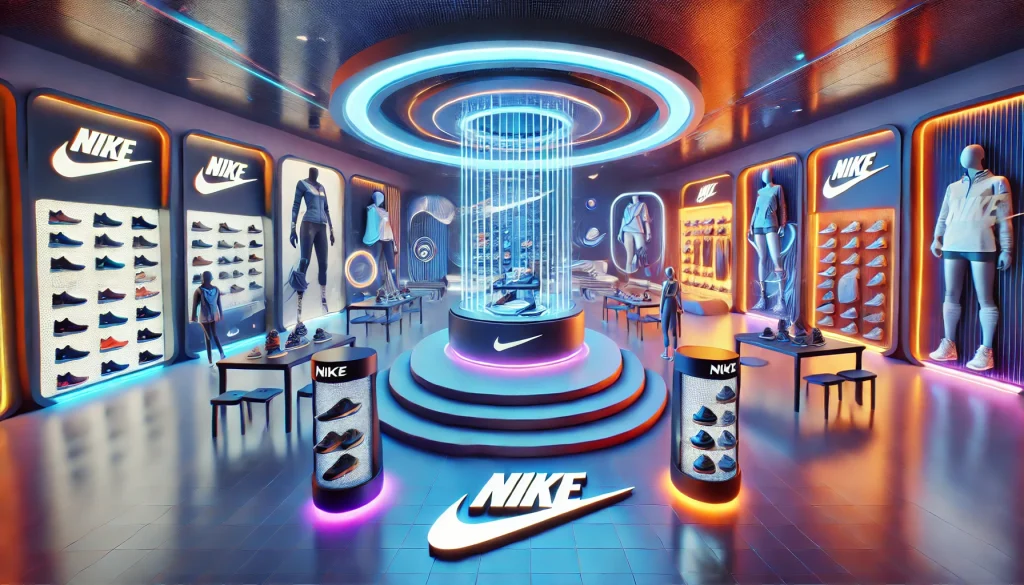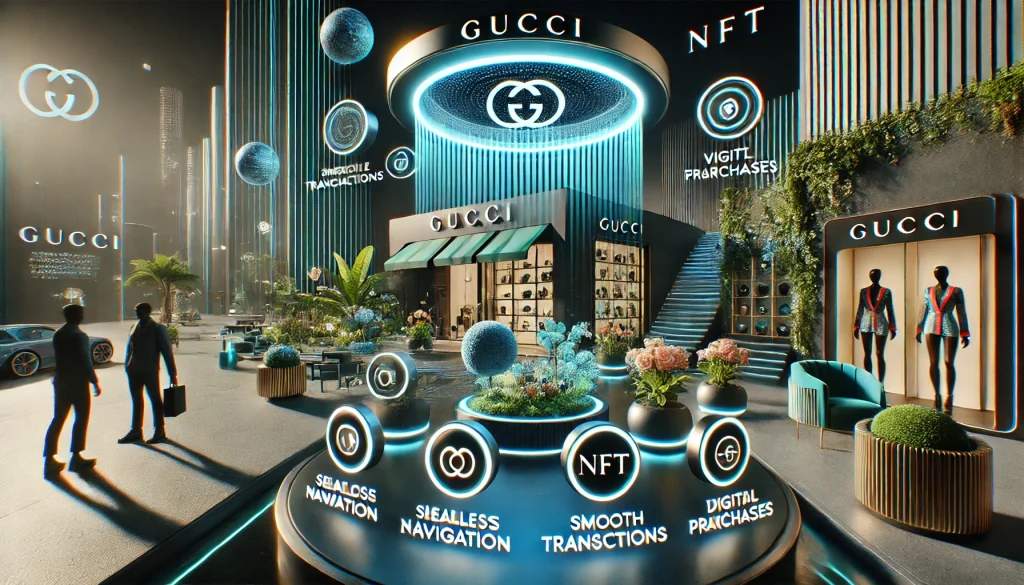Branding in the metaverse is gaining traction as companies explore virtual environments for innovative consumer engagement. The metaverse blends physical and digital realities, offering immersive experiences where brands like Nike and Gucci are already investing. The benefits include enhanced customer engagement, global reach, novel marketing opportunities, and community building. However, challenges such as high costs, technical limitations, and maintaining brand authenticity remain. As the metaverse evolves, understanding how to effectively create a brand presence in this space is becoming essential for marketers looking to stand out and connect with their audiences.

Overview
Branding in the metaverse allows companies to engage with consumers in ways that were previously impossible. From virtual stores to interactive advertisements, the metaverse opens up a vast range of opportunities. However, brands must approach this space with careful consideration of how they can authentically connect with users. The following key features highlight some of the main aspects of metaverse branding:
- Virtual Experiences: Brands can create immersive, interactive environments that consumers can explore.
- NFT Integration: Non-fungible tokens (NFTs) allow brands to offer unique, collectible digital items, enhancing customer engagement.
- Community Building: The metaverse provides a platform for fostering tight-knit communities through digital interaction.
- Personalization: Brands can tailor experiences based on user preferences and behavior within virtual environments.
These elements shape the way branding evolves in the metaverse, but they also present unique challenges.
Key Features of Metaverse Branding
| Feature | Description |
|---|---|
| Virtual Experiences | Interactive spaces where users engage with the brand in a virtual environment. |
| NFT Integration | Offering digital assets like NFTs to enhance engagement and ownership. |
| Community Building | Developing a strong virtual community that fosters brand loyalty. |
| Personalization | Crafting customized experiences based on user behavior and preferences. |
Branding in the Metaverse: Pros and Cons
As with any new frontier in marketing, there are both advantages and drawbacks to establishing a brand presence in the metaverse. Understanding these will help businesses make informed decisions about entering this space.
Pros of Branding in the Metaverse
| Pros | Explanation |
|---|---|
| Immersive Engagement | Brands can create fully immersive experiences that captivate users. |
| Innovative Marketing Opportunities | The metaverse allows for creative marketing strategies not possible in traditional digital spaces. |
| New Revenue Streams | Virtual goods, like NFTs, offer new ways for brands to monetize their presence. |
| Global Reach | Brands can engage with a global audience without geographic constraints. |
| Increased Personalization | Brands can tailor experiences for individuals based on their actions in the metaverse. |
Cons of Branding in the Metaverse
| Cons | Explanation |
|---|---|
| High Initial Investment | Developing a presence in the metaverse can be costly for brands, especially those new to the space. |
| Technical Complexity | Creating seamless virtual experiences requires significant technological expertise. |
| Uncertain ROI | As the metaverse is still evolving, it’s unclear how profitable investments will be in the long term. |
| Security Concerns | Data privacy and security are significant concerns in virtual environments. |
| Lack of Regulation | The metaverse is still relatively unregulated, which can pose risks for brands operating in this space. |
In-Depth Analysis
The success of a brand in the metaverse relies on several factors, from design and functionality to user experience. Let’s break down the performance and usability of branding efforts in this space.
Design

Design is one of the most crucial aspects of metaverse branding. Unlike traditional digital marketing, where flat images and videos suffice, branding in the metaverse demands three-dimensional, interactive designs. Virtual spaces need to be engaging, aesthetically pleasing, and reflective of the brand’s identity. Major companies like Nike, for instance, have created virtual stores where customers can try on shoes in a fully immersive 3D environment. This not only enhances user interaction but also reinforces brand awareness through visually stimulating experiences.
Functionality

Functionality is another key component. Brands that succeed in the metaverse provide users with easy navigation, responsive interfaces, and smooth transactions. For example, Gucci’s digital garden in the metaverse offers an intuitive experience, where users can seamlessly browse collections and even purchase digital assets like NFTs. Brands that can offer a glitch-free experience, where users feel fully immersed, are more likely to foster long-term engagement.
User Engagement

User engagement in the metaverse is far more dynamic than in traditional digital marketing. Gamified experiences, live events, and real-time interaction with brand representatives create deeper connections with users. For instance, Coca-Cola hosted virtual concerts in the metaverse, providing an exclusive brand experience that went beyond traditional marketing strategies. The level of personalization also allows users to feel more connected to the brand, as they can participate in activities that cater to their preferences and interests.
Security and Data Privacy
One area of concern for brands in the metaverse is security. With so much personal data being exchanged in virtual environments, ensuring that users’ information is protected is essential. Some brands have been hesitant to fully embrace the metaverse due to these security risks. However, companies that can implement robust privacy policies and secure transactions will build greater trust with their audience.
Branding in the Metaverse Comparison
When comparing branding efforts in the metaverse, some brands have taken more innovative approaches than others. For example, Nike and Gucci have embraced the metaverse with high levels of interactivity, offering immersive virtual stores and unique digital products. On the other hand, smaller brands may still be in the exploratory phase, testing the waters with simple virtual advertisements or NFTs.
| Brand | Approach | Innovation Level | User Engagement |
|---|---|---|---|
| Nike | Virtual stores, gamified experiences | High | High |
| Gucci | Digital gardens, NFT sales | High | High |
| Coca-Cola | Virtual concerts, branded virtual items | Moderate | Moderate |
| Smaller Brands | Basic advertisements, minimal interaction | Low | Low |
Conclusion
Branding in the metaverse is an exciting and rapidly evolving space. For brands willing to invest in cutting-edge technology and innovative marketing strategies, the potential for growth is enormous. However, it’s not without its challenges. High costs, technical complexity, and security concerns may deter some businesses from diving in immediately. But for those that do, the metaverse offers unprecedented opportunities to engage with consumers in a whole new way. Ultimately, branding in the metaverse isn’t just a trend—it’s the future of marketing.
Branding Metaverse Rating
When evaluating branding in the metaverse, we can rate it based on various aspects like innovation, user engagement, and ease of implementation. Overall, the metaverse earns high marks for creativity and engagement but faces challenges in technical execution and ROI certainty.
Rating: 4.5/5 Stars
FAQ
What is branding in the metaverse?
Branding in the metaverse refers to the practice of creating and promoting a brand’s presence within virtual worlds. This can include virtual stores, digital products like NFTs, and interactive experiences that allow users to engage with the brand in immersive environments.
How can a business start branding in the metaverse?
To start branding in the metaverse, a business should first understand the platform they wish to engage with, such as Decentraland or Roblox. They should focus on creating interactive, engaging content that reflects their brand’s identity and invest in the right technology to support a seamless user experience.
What are the main challenges of branding in the metaverse?
Some of the main challenges include high initial investment costs, technical complexity, and ensuring data security. Since the metaverse is still a developing platform, brands also face uncertainty regarding the long-term return on investment.
Resources
- Oliver Wyman. The Metaverse: A User’s Guide for Brands
- Forbes. Marketing in the Metaverse: Why It Is Vital for Brands
- Brandingmag. Building Strong Brands in the Metaverse Comes in Stages
- McKinsey. Marketing in the Metaverse: An Opportunity for Innovation and Experimentation
- RedAlkemi. Meta Branding: Navigating the Metaverse for Your Brand’s Identity

